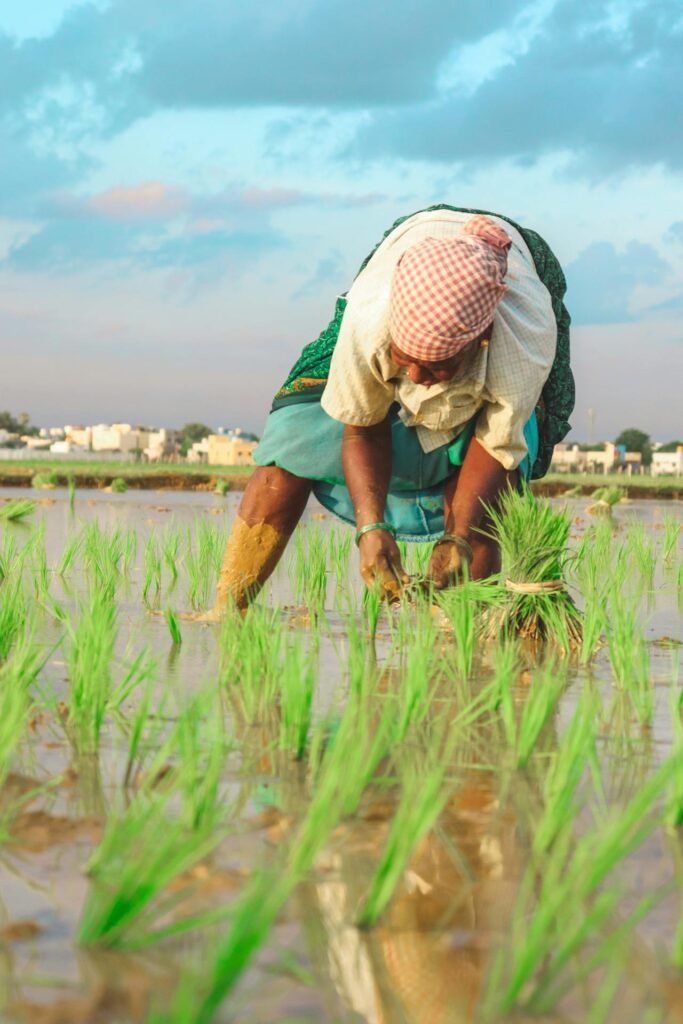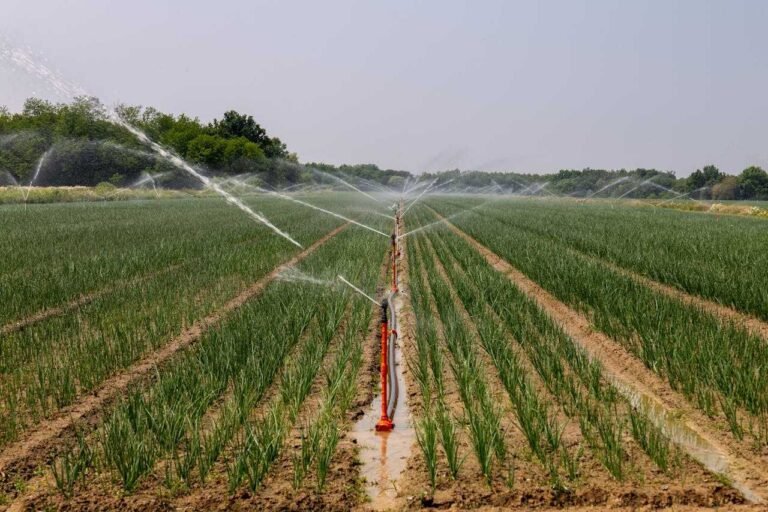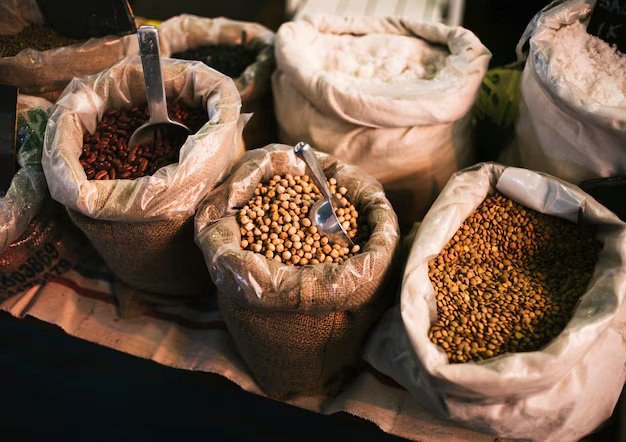Environmental Impact of Traditional Agriculture & Farming
Traditional farming has fed families for generations. It’s built on deep knowledge of the land, passed down through time. These methods often work with nature—not against it—but they’re not perfect. In some places, they cause real harm to soil, forests, and water. At the same time, they help protect local seeds, support wildlife, and allow farmers to cope with floods and droughts.

In This Article
- What Is Traditional Agriculture?
- Environmental Costs of Traditional Farming
- Environmental Benefits of Traditional Farming
- Why Traditional Farming Is Changing
- A Sustainable Future: Blending Tradition and Innovation
- Conclusion: Recommendations for Policy and Practice
What Is Traditional Agriculture?
Traditional agriculture refers to farming systems that have been practised for generations and are rooted in local culture and ecological knowledge. Rather than relying on modern industrial inputs, traditional methods emphasise mixed‑cropping, crop rotation, agroforestry, terracing, and integrating livestock with crops—practices born from long-term observation of local environments. These systems often operate on small, family-owned plots where diverse crops—sometimes dozens of varieties—are cultivated simultaneously or sequentially, adapting to micro‑climates and seasonal rhythms.
They are characterised by low external inputs, the use of heirloom seed varieties, mixed cropping and agroforestry, being labour-intensive and time-consuming, and a heavy reliance on rainfall (non-irrigated).
Environmental Costs of Traditional Farming
1. Soil Degradation
When farmers repeatedly till the land without giving the earth time to heal, soil loses more than just its surface. It suffers erosion, becomes infertile, and sometimes even turns into a desert. According to UNESCO, erosion, over-ploughing, and loss of organic matter degrade about 75% of global soils, and this could reach 90% by 2050 if nothing changes. Another recent study shows this same soil degradation threatens food security and even sparks migration in vulnerable regions.
In everyday farming, this means vital nutrients are washed away, crop yields decline, and farmers often respond by expanding the field, triggering a destructive cycle. Research shows that reversing this trend requires restoring organic matter, keeping the soil covered, and reducing intensive ploughing.
2. Deforestation and Habitat Loss
In many parts of Africa, Asia, and Latin America, farmers clear forests using slash-and-burn techniques to create new fields. The Congo Basin is a clear example. Shifting cultivation there accounts for over 60% of canopy loss and more than 70% of above-ground carbon stock reduction. According to Climate Brief, smallholder farming alone makes the Democratic Republic of Congo Africa’s 16th-largest greenhouse gas emitter, despite minimal fossil fuel use.
That forest clearance doesn’t just release greenhouse gases—it spells trouble for wildlife, destroys carbon sinks, and fractures habitats for species like gorillas and forest elephants.
3. Greenhouse Gas Emissions
Traditional farms might avoid fossil fuel dependence, but they can still be major sources of potent greenhouse gases. Methane (CH₄) and nitrous oxide (N₂O) from livestock and fertiliser use pose serious climate risks. An EPA report suggests that agriculture is the leading source of methane and nitrous oxide emissions in the U.S., with livestock responsible for more than a third of those emissions.
Global studies show similar trends. A Korea-based study reveals livestock-related methane and N₂O emissions growing at annual rates between 1.7% to 3.2% from the 1990s to 2009. In tropical settings, higher temperatures and humidity can further amplify these emissions during manure breakdown.
4. Water Misuse
In many traditional systems—especially those using open earth canals—water is carried in the open air, leading to considerable seepage and evaporation. Global studies confirm that the biggest source of water loss isn’t evaporation but seepage through porous canal beds—sometimes losing up to 70% of water volume—especially in sandy soils.
These losses aggravate water scarcity. One major global study projects that by 2050, clean-water scarcity—meaning combined lack of quantity and quality—could triple, affecting over 3 billion people.
Even in places with moderate rainfall, traditional irrigation often relies on this inefficient canal system. By contrast, modern drip and closed-loop hydroponic systems can conserve up to 80–90% of water by minimising evaporation and runoff.
5. Biodiversity Decline
You might think that rotating staple crops like yams, millet, or maize keeps things diverse, but even when farmers grow multiple staples, traditional monocropping systems can still reduce biodiversity. Over time, repeatedly planting the same few crops depletes the soil and supports only a narrow range of plant and animal species. Scientific reviews show monocultures reduce species richness, disrupt ecosystems, and leave fields vulnerable to pests and disease. This isn’t just about what grows above ground—the diversity of soil microbes also suffers, weakening nutrient cycles and long-term fertility.
Learn More: The Role of Terrace Farming in Sustainable Agriculture
Environmental Benefits of Traditional Farming
1. Lower Synthetic Inputs
One key advantage of traditional methods is that they avoid synthetic chemicals—no mass applications of pesticides or artificial fertilisers. This keeps rivers and streams cleaner. In contrast, modern farms often rely heavily on synthetic inputs, which then wash into waterways. A global study showed around 730 tonnes of pesticides enter rivers annually, contaminating roughly 13,000 km of waterways. That’s not just numbers—it’s a threat to fish, insects, and entire river ecosystems.
By keeping chemical use minimal, traditional farms reduce this runoff. That translates to healthier aquatic environments for both plants and wildlife. The Guardian recently reported worrying levels of pesticide contamination in Britain’s rivers, largely linked to modern farming practices. But traditional farms, with their limited or zero‐synthetic approach, sidestep much of this pollution—something our waterways desperately need.
2. Nurturing Native Diversity through Agroforestry
Instead of eliminating trees and shrubs, many traditional systems integrate them deliberately, through agroforestry and intercropping. These practices sustain heirloom seed varieties and local wildlife, offering habitat, pollinator niches, and nutrient-rich environments. A meta-analysis covering 50 years across 4,000+ studies found that diversified systems saw biodiversity skyrocket by up to 2,800% alongside healthier soils and better profitability. In Southeast Asia, for instance, agroforestry prevented around 250,000 hectares of additional deforestation each year between 2015 and 2023. Integrating native trees thus preserves local genetic variety and wildlife corridors, supporting ecological resilience and cultural heritage.
3. Resilience to Climate Shocks
Traditional farms often use adaptive techniques to cope with unpredictable weather. For instance, in Bangladesh, centuries‑old “floating gardens” made of organic debris and bamboo let farmers grow vegetables even during extended monsoon flooding. The FAO recognises this as a top example of climate adaptation. Similarly, integrated rice–fish farming systems dramatically reduce the risk of crop loss while boosting productivity. They typically use 24% less fertiliser and 68% less pesticide, while also curbing methane emissions compared to flooded monocultures. These time‑tested systems showcase how traditional farming builds shock‑absorbing resilience to droughts and floods.
4. Circular Resource Use
On many traditional farms, nothing goes to waste. Animal manure, plant stalks, and food scraps get composted and returned to the fields. Research from Canada highlights how regenerative, circular methods restore soil, conserve water, and reduce reliance on external fertilisers—boosting both productivity and ecosystem health. This closed‑loop system not only cuts down waste but also locks nutrients into the ground year after year, nurturing vibrant soils and reducing pressure on natural resources.
Why Traditional Farming Is Changing
1. Population Growth
More people mean more mouths to feed using the same or smaller plots of land. In places like Tanzania’s Uluguru Mountains, growing populations are forcing smaller farms and shorter fallow periods, which hampers the land’s ability to rest and recover. That ultimately speeds up erosion and degrades soil health.
2. Land Fragmentation
Inheritance traditions and land division have led to highly fragmented farms across many regions. This makes it tough for farmers to invest in long-term soil care, mechanise fields, or coordinate conservation efforts. In East Africa, the continual splitting of farms has eroded both productivity and cooperation.
3. Climate Change
Rainfall is changing in both timing and intensity. For example, Kenya’s Rift Valley has seen fewer rain days but more intense showers during peak season, leading to erosion and messy planting cycles. In Zimbabwe, prolonged droughts and unpredictable rains have made traditional planting calendars unreliable, causing food insecurity and forcing people to leave farming.
4. Policy Neglect
Many governments favour industrial agriculture when distributing subsidies and making policies, often leaving small traditional farmers unsupported. In the U.S., soil conservation programs like Illinois’s “cover crop” subsidies struggle due to underfunding, even though these measures help reduce erosion. In Nigeria, inconsistent policies and a lack of tenure security have made it harder for smallholders to access vital farming infrastructure.
5. Market Demands
Farmers worldwide are pressured to switch from diverse subsistence crops to cash crops like cocoa, cotton, or even oil palm. In Nagaland, India, shorter fallow time worsens soil health as forests give way to mono-cropping aimed at market profits. That shift sidesteps sustainable practices like mixed cropping, which support biodiversity and long-term resilience.
A Sustainable Future: Blending Tradition and Innovation
- Agroecology & Permaculture: These methods combine local knowledge and ecological science, creating farming systems that mirror natural ecosystems. A 2024 global review found 51% of agroecological initiatives yielded positive benefits for both income and productivity, while enhancing soil quality and biodiversity. In Central Europe, permaculture farms showed significant soil carbon gains and healthier soils compared to conventional farms. These approaches don’t just grow crops—they cultivate thriving agro-ecosystems.
- Conservation Agriculture: Conservation agriculture rests on three pillars: minimal soil disturbance, permanent cover, and crop rotation. This model mimics natural cycles and can dramatically improve yields, reduce erosion, and boost soil health—all without resorting to heavy tillage or chemical.
- Renewable‑Powered Irrigation: Solar‑driven pumps and smart drip systems are quietly transforming water use. IAEA and FAO work in Kenya shows that adopting moisture‑sensitive irrigation boosts yields by roughly 20% while cutting fertiliser costs by a similar margin.
- Education and Farmer Field Schools: Farmer Field Schools bring seasonal, hands-on training right to the farm. Rather than lecturing, facilitators guide farmers to run their own trials, working with their own land and weather. The FAO in Kenya and globally has trained between 400,000 and 1 million farmers yearly, empowering them to improve soil practices, reduce pesticide use, and boost yields—sometimes by double-digit percentages.
Learn More: Pros and Cons of the Green Revolution
Conclusion: Recommendations for Policy and Practice
To foster resilient, climate-smart farming, governments and donors should subsidise agroecological inputs—such as compost and cover crop seeds—especially for smallholders. Studies in the U.S. show financial incentives, like cost-sharing for cover crops, significantly boost adoption and soil health over time.
Securing land tenure is vital: farmers who feel ownership of their land invest more in lasting soil improvement. Climate-smart agriculture research affirms that stable land rights consistently encourage the uptake of sustainable techniques .
Introducing carbon credit markets for smallholders—rewarding practices that store carbon in soil—can open new income streams. Meta-analyses highlight how methods like cover cropping sequester ~3.3 Mg CO₂‑eq/ha annually.
Invest in rural extension services that go beyond crop advice to include climate-smart approaches, such as composting, mulching, and agroforestry. Evidence from West Africa shows that farmer-to-farmer and practitioner-based learning effectively spreads agroecological strategies.
Finally, prioritise women’s access to land, training, and inputs. Climate-smart agriculture reviews consistently reveal that empowering women enhances adoption rates and resilience outcomes for families and communities .







